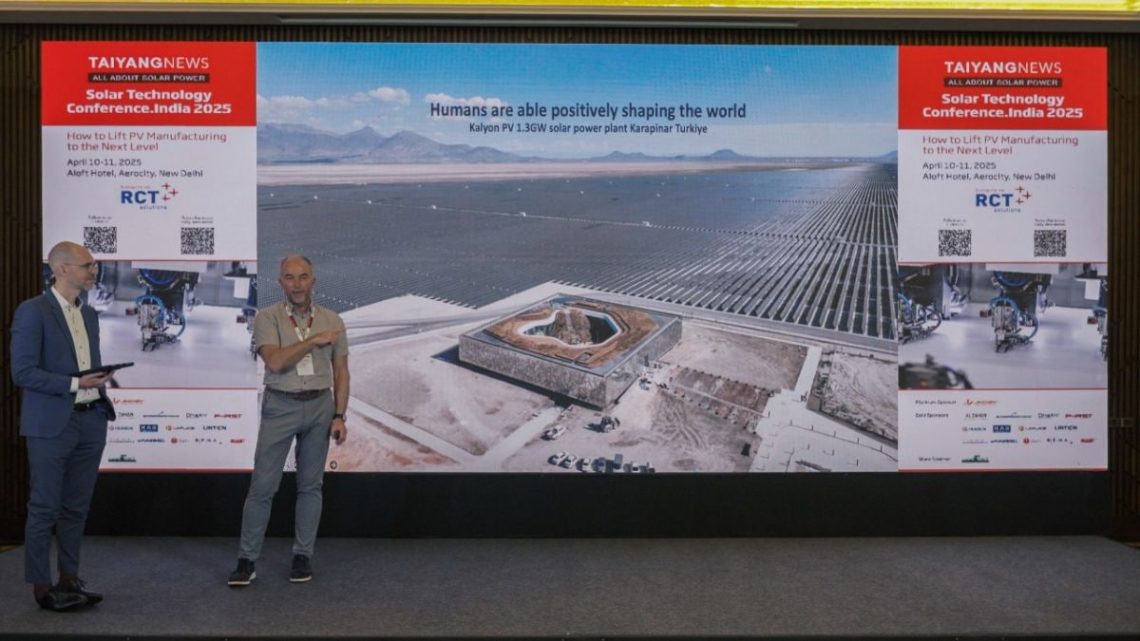The solution for allowing households to generate their own energy, which would result in the price of per unit of electricity dropping steeply to the range of Rs 1-2, already exists in India. Now, it is a matter of innovation and adoption, experts sayread moreIndia is standing on the cusp of a solar energy transformation. On the other side of this revolution is the promise of a positive change in energy security that will also reshape the daily life for millions of citizens.No other place was this picture clearer than at the TaiyangNews Solar Technology Conference India 2025. At the country’s largest gathering of solar energy equipment manufacturers and stakeholders, the message was precise: The country’s solar ambitions are an imminent reality that need to be driven by bold innovation.AdvertisementSpeaking to Firstpost on the sidelines of the conference, Sukumar Madugula, Director of Sales at RCT Solutions, a Germany-headquartered engineering solutions provider involved in many Indian solar manufacturing projects, provided an optimistic and transformative future.More from India
Waqf Act hearing: 5 sharp questions that CJI, Supreme Court asked
Experts reveal how per unit electricity cost in India could fall as low as Re 1
Trump’s tariff war presents an opportunity that India looks to grab
Justice BR Gavai to be India’s next CJI, to take oath on May 14“In the next 10 to 15 years, renewable sources will constitute over 60 percent of India’s energy mix,” he said. Madugula anticipates household electricity costs dropping dramatically to just Rs 1-2 per unit, a scenario that could redefine energy access and affordability for millions.Dr. Peter Fath, CEO of RCT Solutions, highlighted solar energy’s inherent economic logic, framing it as a “zero-fuel industry.” He pointed out a fact that should be obvious, but is often overlooked instead: “The fuel that solar energy uses to generate electricity – sunlight – is not only free but abundantly available in India.”Michael Schmela, Managing Director at TaiyangNews (L) and Prof. Dr Peter Fath, CEO of RCT Solutions (R) at the Solar Technology Conference India 2025. Image courtesy: TaiyangNewsAlthough this statement captures an essential truth, its practical realisation is contingent on overcoming critical hurdles.Indeed, India is committed to a massive expansion of its solar manufacturing infrastructure. Subrahmanyam Pulipaka, CEO of the National Solar Energy Federation of India (NSEFI), outlined ambitious goals during the conference: India’s solar module manufacturing capacity is set to double from approximately 80 GW in 2025 to 160 GW by 2030, while solar cell production is expected to experience an eightfold increase from the current 15 GW to an astonishing 120 GW.In fact, India is looking for establishing a manufacturing industry along the entire value chain, including significant capacities for producing wafers and silicon, each forecasted to reach 100 GW by the end of the decade.However, Dr. Fath stressed that achieving these ambitious goals involves more than merely ramping up production. Efficiency and innovation must play key roles.AdvertisementCurrently, even the most advanced commercial solar panels convert only 24-25 percent of sunlight into electricity. Even at this level, solar is usually cheaper than any other power generation technology, however, boosting this efficiency translates directly to better space utilisation – generating more energy without requiring additional land.Innovation in solar technology is rapidly progressing in India, particularly at institutions like IIT Bombay, where cutting-edge research has delivered promising results. Prof. Dinesh Kabra shared exciting developments at the conference, highlighting his team’s breakthrough of 29.84 per cent efficiency for perovskite solar cells, developed in collaboration with ART PV India.With a commercial target of 30 percent efficiency by 2027, the implications for India’s energy transition are profound.Yet, despite these significant strides, Dr. Fath noted that the pace of innovation in India lags behind other nations. Drawing a comparison to Germany, which has several solar research institutes, he pointed out that the largest such establishment has 1,300 researchers focusing exclusively on solar energy. He identified India’s fragmented approach— often confined to small academic sections— as an area ripe for improvement.Advertisement“India needs specialised solar research centers,” he asserted, advocating for increasing investment in solar research to at least 2 per cent of GDP.Moreover, democratising access to solar energy is essential to realize its full economic potential. “To bring down the per-unit electricity cost to ₹1–2, and perhaps even to zero, solar energy needs to become universally accessible,” Dr. Fath said.He illustrated this by citing Germany’s example, which successfully transitioned to producing 62 per cent of its energy from renewable sources in just ten years – a testament to what is achievable with coordinated policy and technological efforts.Ultimately, India’s solar revolution hinges not only on technological breakthroughs but also on bridging the critical gap between academia, industry, and policy-making. If India can align these elements, the nation’s solar dream may swiftly become an everyday reality, and, as TaiyangNews Managing Director Michael Schmela put it, solve the “energy trilemma” of energy security, affordability, and environmental legacy for generations to come.AdvertisementTagsGermanyIndiaRenewable energyEnd of Article
Link to article:
Experts reveal how per unit electricity cost in India could fall as low as Re 1
